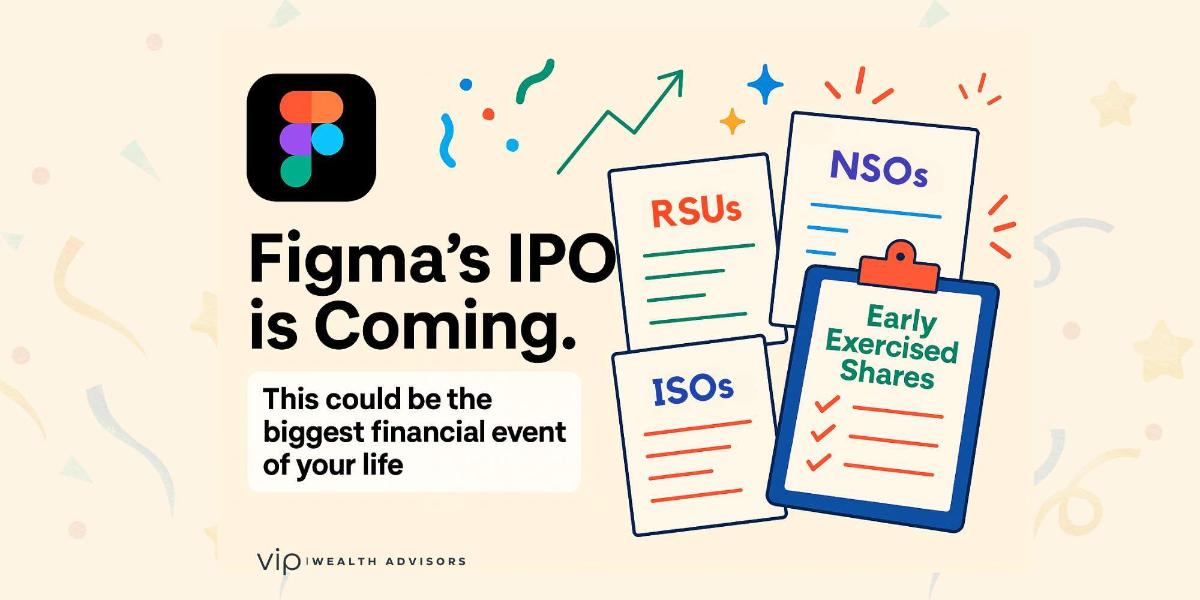The wait is over - Figma, the beloved browser-based design platform, has finally gone public, setting off a shockwave across the global tech sector. In a year already marked by key IPOs, Figma’s debut on the New York Stock Exchange under the ticker "FIG" stands apart, not just for its impressive valuation, but for what it represents: the return of confidence in high-growth SaaS platforms built for the AI era.
After years of anticipation and a failed $20 billion acquisition attempt by Adobe, Figma’s independent rise has culminated in one of the most celebrated IPOs of the decade. With its direct listing format and explosive financials, the company is not only redefining how we design, but how the tech world enters the public markets.
A Listing That Lived Up to the Hype
Figma’s IPO raised roughly $1 billion, with shares priced between $25 and $28, valuing the company at around $14.6 to $16.4 billion. About 37 million shares were floated, including 12.5 million issued directly by Figma, instantly placing it among the most high-profile listings of 2025.
What truly set Figma’s offering apart was its auction-style format, a bold move echoing Google’s historic IPO. This structure allowed institutional and retail investors to place bids reflecting true demand, avoiding the traditional Wall Street pricing games. It’s a symbolic and strategic nod to transparency, very much in line with Figma’s product ethos.

“Amazing Numbers”: A Rare Growth Story with Real Profits
Amid a cautious IPO market, Figma’s financials offered a breath of fresh air. The company reported $749 million in revenue for 2024, a 48% jump from the previous year. In Q1 2025 alone, Figma brought in $228.2 million, representing a 46% year-over-year growth rate. Even more impressive? A net income of $44.9 million in Q1 that is a clear signal that Figma isn't just scaling, but scaling smart.
While its 2024 net loss was a steep $732 million, this was largely due to the one-time cost of the failed Adobe deal, a breakup that ultimately gave Figma a new narrative of resilience and independence.
Its global footprint is equally jaw-dropping: over 13 million active users, with 95% of the Fortune 500 relying on its tools. With a four-year CAGR of 53% through 2024, Figma is outpacing many of its SaaS peers not just in growth but in strategic focus.
Viral Growth, Enterprise Grip, and AI-Powered Evolution
Figma’s rise wasn’t fueled by massive ad spend or bloated sales teams. Its growth has been organic, viral, and community-driven. Designers, developers, product managers, and even educators have embraced it as the go-to tool for real-time, collaborative creation. It’s the ultimate bottom-up SaaS success story.
This year, Figma unveiled several key innovations:
- AI-enhanced features for auto-generating layouts and assets.
- Dev Mode, a space tailored for developers to streamline design-to-code workflows.
- Figma Make and Figma Sites, empowering teams to build apps and websites without writing code.
These updates have ensured Figma stays ahead of competitors while attracting new user segments beyond designers - product owners, engineers, and business teams are now equally invested in its ecosystem.
Global Leadership and Post-Adobe Resilience

The collapse of the Adobe acquisition in 2022 could have been a crushing setback. Instead, it became a defining moment. Figma leaned into its autonomy, expanded its roadmap, and solidified its leadership under co-founder and CEO Dylan Field, who retains over 73% voting control.
This founder-led resilience is a big reason why the market has placed such a high premium on Figma. Investors aren’t just betting on a design tool rather they’re backing a leader who turned a regulatory block into a growth springboard.
Redefining the Tech IPO Playbook
Figma’s IPO marks more than a return to public markets for design-centric platforms. It’s a bellwether for the entire SaaS industry. With enterprise AI, cloud collaboration, and workflow automation becoming non-negotiables, Figma is proving that these aren’t just trends but they’re billion-dollar business foundations.
Its success could reopen the IPO floodgates for companies long stuck in the private equity cycle. The message is clear: If you’re profitable, scalable, and AI-integrated, there’s a place for you in today’s public markets.
Challenges Ahead, but Momentum Is Strong
While Figma’s trajectory looks sharp, it isn’t without its risks. The rise of AI-generated design tools could trigger a new wave of disruption, especially if companies start building in-house alternatives. Macroeconomic pressures, geopolitical tensions, and competitive threats from players like Canva and Adobe remain on the radar.
But so far, Figma has done what few can: turn market uncertainty into momentum. And with a growing ecosystem of tools, a rabid user base, and a visionary founder at the wheel, the company appears well-prepared for whatever lies ahead.
What the Future Holds
Figma’s IPO is more than a financial event, it’s the redefinition of a category. From the failed Adobe acquisition to a blockbuster listing, the company has demonstrated that creativity, strategy, and community can power a new kind of tech titan.
In a world where product-building is collaborative, remote, and fast-paced, Figma is leading the way—not just as a tool, but as a platform for the future of work. Whether you're a startup founder, a product designer, or a retail investor eyeing the next big wave, one thing is clear:
Figma didn’t just go public. It went big. And it brought the tech sector with it.

.webp?alt=media&token=9313c054-daa3-4338-86cf-8d03c492cf4c)
Discussion
Start the conversation
No comments yet
Be the first to share your thoughts on this article. Your insights could spark an interesting discussion!